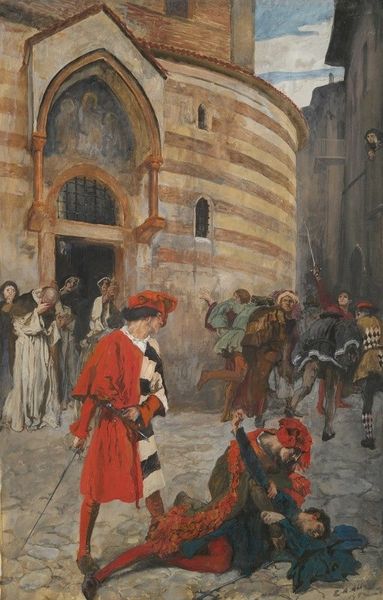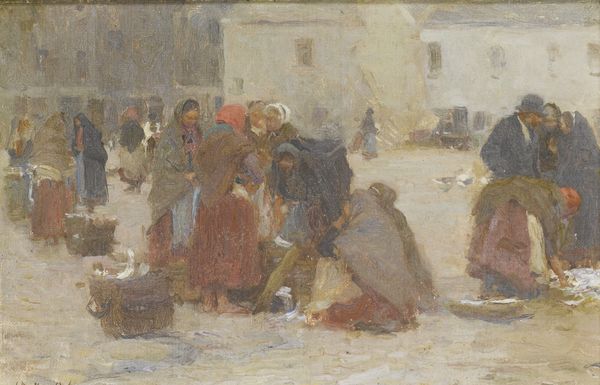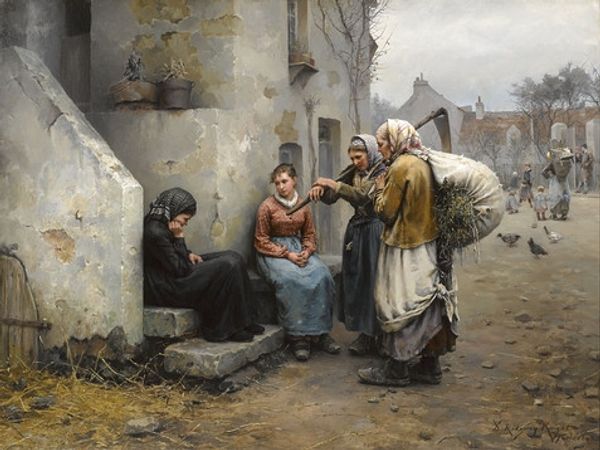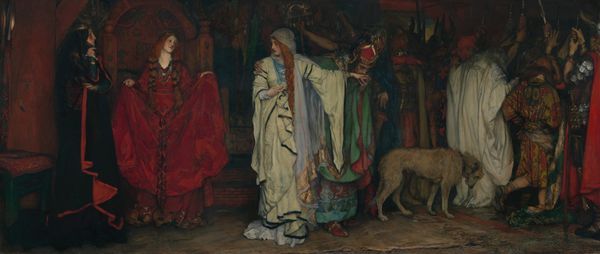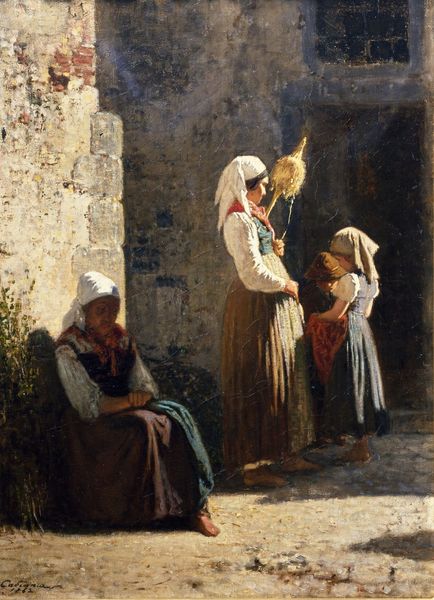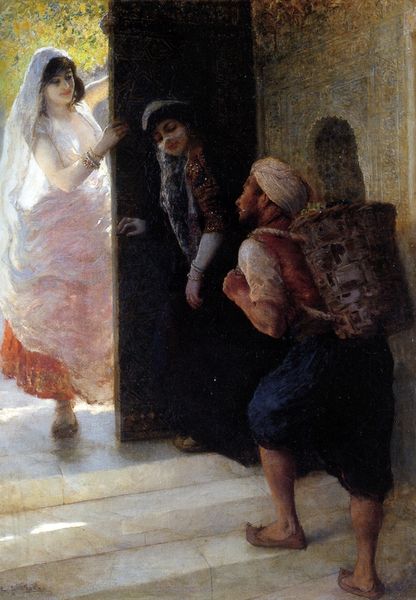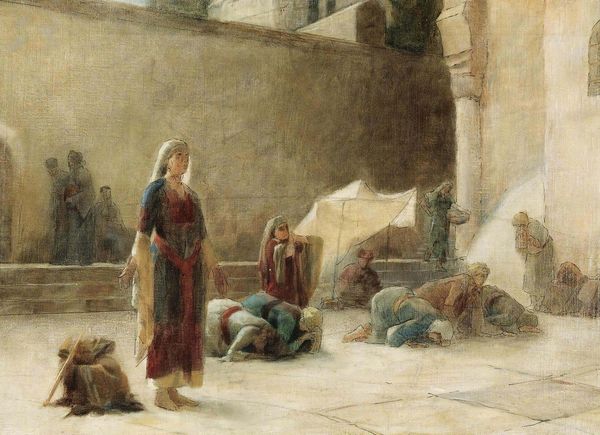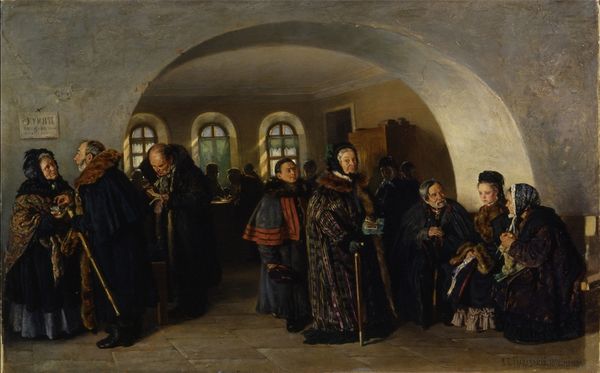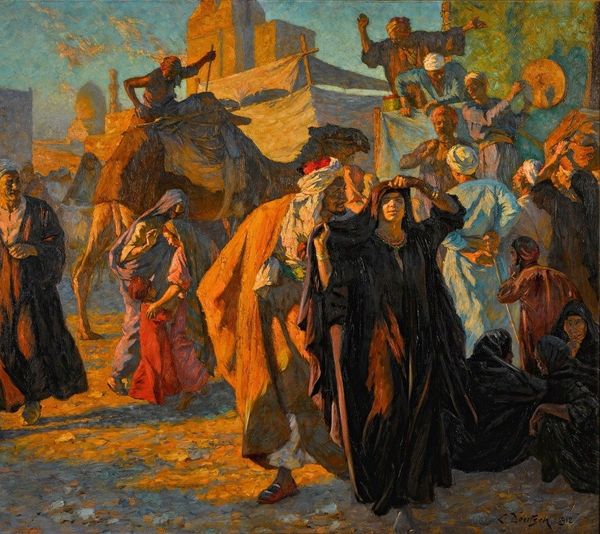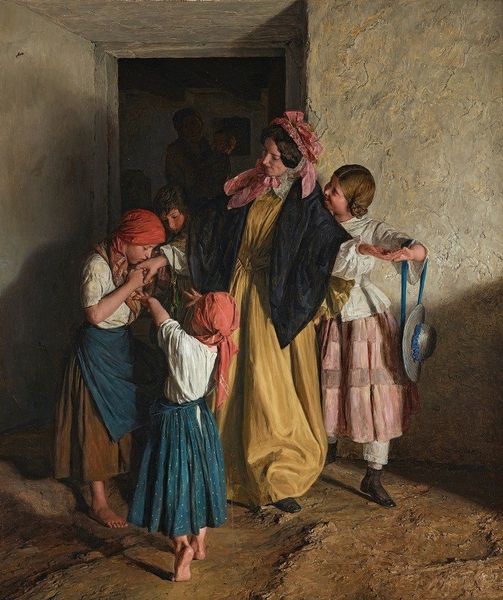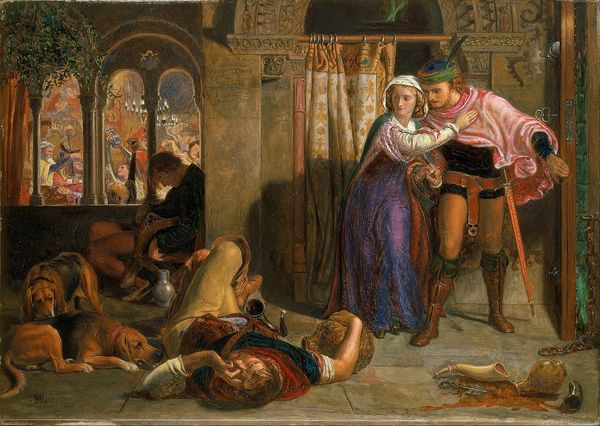
painting, oil-paint
#
gouache
#
painting
#
oil-paint
#
painted
#
figuration
#
oil painting
#
underpainting
#
genre-painting
#
italian-renaissance
#
mixed media
#
watercolor
Copyright: Public domain
Curator: Giuseppe Abbati painted "La Supplica," which roughly translates to "The Supplication." While the exact date remains unknown, art historians situate it within his broader body of work, mostly in the second half of the 19th century, connecting its themes to broader socio-political tensions in Italy at the time. Editor: It certainly evokes that era, but what strikes me first is its quiet solemnity. The muted colors and rough brushstrokes create a kind of veiled reality. Is she begging, or is she asking a difficult question? Curator: That ambiguity is key, I think. Consider how Abbati was engaging with themes of poverty and social injustice which were then debated at the time in cafes and parliament. How can we visualize what a woman on her knees in public, possibly pleading, actually *meant* in Italian society then? It speaks to public performance, private struggles, and political rhetoric. Editor: You're right, those rich, dark robes set against the stone façade create a dramatic tension. The woman is at the center of the composition. To me, the choice of colors isn’t arbitrary: the darkness of her robe and that brick-colored hood are the colors of profound grief. What do those behind her represent? Silent support? Quiet witnesses? Curator: Potentially both. Group dynamics matter to a piece like this. The witnesses complicate her solitary vulnerability and turn private action into something else, a street theatre maybe? Those around certainly give weight to her display, be it coerced, performed or felt. Editor: Exactly! And her supplication as a symbol then? Could it be read beyond that one person and that particular situation as the state of all in a post-unification nation, maybe? Curator: Well that’s a can of worms which art historians enjoy wrestling with! The politics of seeing certainly invites us to draw wider inferences. Ultimately the power of "La Supplica" rests on its visual density which still compels dialogue between past realities and our present viewing practices. Editor: Absolutely. In viewing the play of shadows, brush strokes, and evocative figuration, the painting manages to stir up complex questions and reflections on Italian society across the centuries. A success for any painter!
Comments
No comments
Be the first to comment and join the conversation on the ultimate creative platform.
